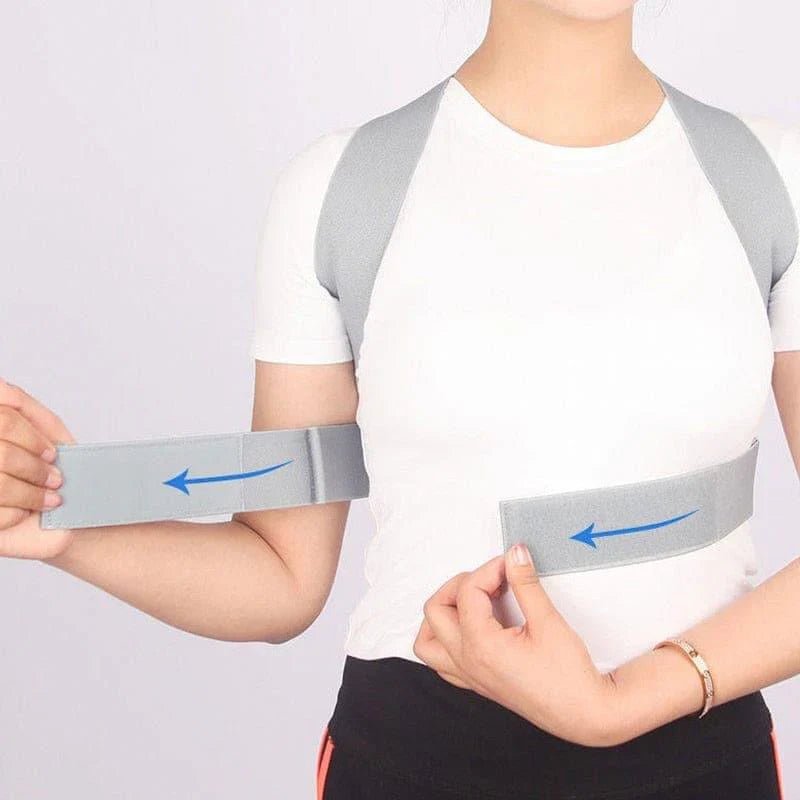If you've been struggling with back discomfort, rounded shoulders, or simply feeling off after a long day at your desk, you're not alone. More people than ever are looking into posture corrector belts—and wondering if they actually make a difference.
Let’s dive into everything you need to know before you decide whether a posture corrector belt is right for you.
First Things First—What Is a Posture Corrector Belt?
A posture corrector belt is a wearable device that wraps around your upper body and gently pulls your shoulders back. Its main goal? To align your spine and help you develop better posture habits.
But it’s more than just a physical tool—it’s a reminder. A reminder to sit straight, to keep your chest open, and to avoid slouching after hours of working, scrolling, or texting.
Does It Really Work?
One of the most common questions people ask is, “Do posture corrector belts really work?”
The short answer is yes, but there’s a catch. They work best when they’re used properly and in combination with exercises that strengthen your core, shoulders, and upper back.
Think of the belt like training wheels for your posture—it’ll guide you, but you still need to learn how to ride the bike yourself.
Is a Posture Corrector Belt Useful for Everyday Life?
Absolutely. Most people find them especially useful in situations like:
-
Sitting for long hours at a computer
-
Working from home with less-than-ideal setups
-
Recovering from minor back or shoulder strain
-
Rebuilding awareness after years of slouching
You’ll likely notice the biggest improvement when you use it consistently and combine it with lifestyle changes like stretching, yoga, or posture-focused strength training.
How to Use a Posture Corrector Belt the Right Way
Here’s how to get started:
-
Start with short sessions — about 15–30 minutes per day.
-
Gradually increase time as your muscles get used to the support.
-
Wear it during tasks that trigger bad posture — like sitting at your desk or watching TV.
-
Take breaks. Don’t wear it for too long at once—2 hours max is ideal.
-
Focus on building awareness. Try to carry that posture into the rest of your day.
How to Wear a Posture Corrector Belt Comfortably
-
Put it on like a backpack. The straps should go over your shoulders and around your back.
-
Adjust the straps. It should feel snug but not tight.
-
Make sure you can breathe and move comfortably.
-
Don’t over-tighten. If you feel discomfort or tingling, loosen it immediately.
The goal is gentle correction, not a rigid brace that locks you in place.
How Long Should You Wear It?
There’s no one-size-fits-all rule, but most experts recommend:
-
Start with 15–30 minutes a day.
-
Increase gradually up to 1–2 hours per day.
-
Don’t wear it all day—you want your muscles to get stronger, not lazy!
Is a Posture Corrector Belt Good for Long-Term Use?
Yes—if it’s used as a training tool. Long-term benefits come when you use the belt to build better habits, not rely on it forever. It should supplement your lifestyle, not replace posture-friendly movement and strengthening exercises.
Common Misconceptions About Posture Belts
Let’s bust a few myths:
-
“Wearing it all day is best.” Nope. That can weaken muscles over time.
-
“It’ll fix my posture overnight.” Also no. Like any habit, posture takes time to improve.
-
“Only older people need it.” Wrong again. People of all ages struggle with posture—especially in today’s digital world.
Can It Help With Knock Knees?
No, posture corrector belts aren’t designed for leg or knee alignment issues like knock knees. They specifically target upper body posture—your spine, shoulders, and neck.
If you’re looking for support for your legs or knees, consider braces or exercises specifically designed for lower limb alignment.
Real-Life Feedback: What Users Say
Here’s what some people have shared after trying posture corrector belts:
-
“I didn’t realize how much I was slouching until I wore it for the first time.”
-
“It helped me become more mindful throughout the day—even when I wasn’t wearing it.”
-
“My back pain has reduced a lot since using it at work.”
Everyone’s experience is different, but one thing’s consistent: it works best with conscious effort and patience.
Final Thoughts: Is It Worth Buying?
If you're dealing with back fatigue, rounded shoulders, or want to prevent posture issues down the road, a posture corrector belt is a smart investment. It’s affordable, easy to use, and can genuinely support your journey toward a healthier spine.
Just remember—good posture isn’t something you wear. It’s something you train. And this belt can be your guide on that path.

